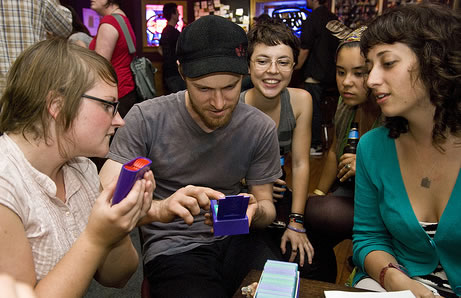
(Photo by Ernie)
When we reach out to our prospective customers it usually feels like work: identifying core needs, creating an appropriate message, spreading the message, fielding inquiries, and refining the message for the future. It’s work for you and it’s work for your prospects (they’re generally contacting you because you’re helping them solve a problem). What if you could make marketing FUN for everyone?
We know games can be fun, immersive, and naturally viral (in 2011, spending on US games totaled $21.6 billion). Gamification is the process of applying elements of game play to real-world problems (including your marketing efforts) using such simple techniques as: achievement badges/levels, progress bars, and user challenges. If you have a Facebook page, you’re focused on the number of likes/friends. If you have a cell phone, you might be focused on your Foursquare badges. If you have a LinkedIn profile, you may have been subtly coerced to complete your profile (seeing how close you were to 100% completed). We seek to get confirmation that we’re liked or authorities in our social circles. You can leverage this same feeling in your own marketing.
The first step is to create goals that your prospective customers care about: fame, reputation, (financial) reward, competition, charitable giving, etc. Ideally these goals should be in alignment with your company’s mission and offerings. If you’re not sure, ask your customers for input.
Create tangible milestones to achieve these goals (points, badges, trophies, etc.). The milestones should initially be easily achieved, then gradually stretched out to increase the “special-ness” of achieving the goals. If it takes just a few minutes and anyone can achieve the goals, then the achievement is a big deal. This is the essence of great game levels – make it easy for people to learn the basics, then ramp up the challenge to reward the efforts.
Now you need to create the game itself – the fun part. It could be a smartphone app that you give away, an online game, a treasure hunt, quizzes, etc. But it’s got to be fun to both play and fun to watch from the sidelines. Your marketing effort should initially be focused on creating the experience, but ongoing, it needs to be encouraging the spectators/audience. Make what people who play do visible and make your (social) marketing about cheering on those that are “daring enough” to play. By highlighting them, you both win.
If the game you create is fun in its own way (not just for a narrow audience) then you’ll likely get a viral bump, as people will want to share the fun with their friends. But make sure that the game aligns with your business model (and has measurable analytics), otherwise you’ll quickly find yourself spending time in the game business, but not growing your company’s success.